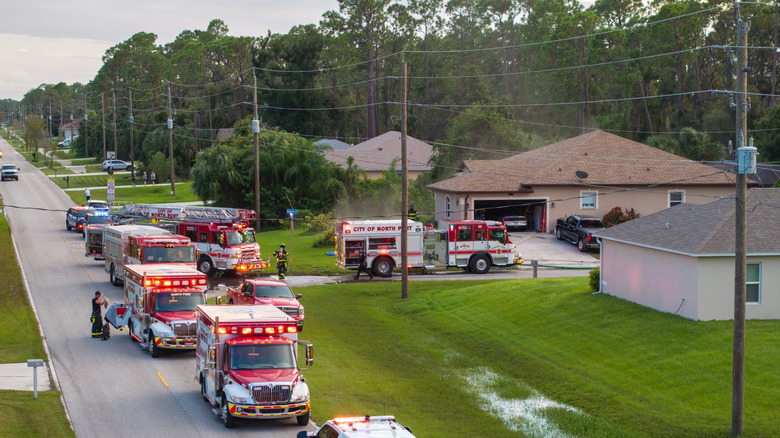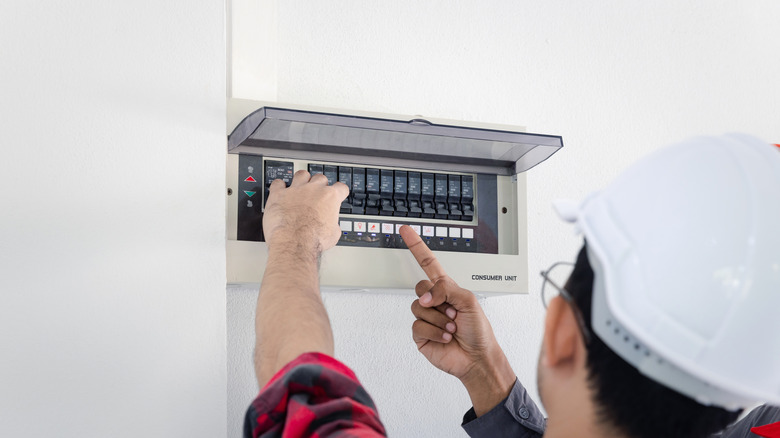Make Your Home Safer From Electrical Fires By Not Ignoring This Warning Sign
According to the U.S. Fire Administration, there were 23,700 residential building fires caused by electrical malfunctions in 2023. These fires caused hundreds of deaths and injuries, along with over $1.5 billion in damages. So, while it may seem unlikely for an electrical fire to start in your home, it is definitely better to be safe than sorry. When searching for warning signs that precede an electrical fire in your home, you may know to look out for damaged wiring, overloaded outlets, and sparks, but there is another sign to watch out for that's much easier to overlook: flickering lights.
There are a few potential reasons why your lights are flickering. Some of the causes are annoying but fairly benign, while others indicate major issues that could result in electrical fires. Generally, if there is only one odd light blinking, then the problem is unlikely to be fire-causing. Widespread, repeated flickering throughout the home is more likely to mean there is a significant and dangerous problem. Either way, you should take steps to identify and fix the underlying issue to prevent fires. Single light issues are likely to be caused by a lightbulb that is at the end of its lifespan or improperly screwed into the socket. Overloaded circuits, voltage fluctuations, and loose wiring connections can also cause lighting issues and may be more serious. If the flickering is widespread, there may be damaged or loose electrical components, power surges, breaker or meter faults, or insufficient grounding or bonding, all of which can be dangerous.
Why flickering lights are dangerous and what you can do
Because flickering lights are caused by underlying issues that can lead to electrical fires, it makes sense to be concerned. Loose or faulty wire connections and voltage fluctuations are particularly dangerous when it comes to electrical fires. In fact, wiring issues are responsible for the majority of electrical fires. When the wiring is faulty, loose, or outdated, it may be more prone to arcing and overheating, which can start fires. Voltage fluctuations can overload electrical panels, also leading to overheating and hot wires that could spark and catch fire. So, especially if you suspect that one of these issues could be responsible for the flickering, you should take action.
Of course, while there are some things you can try, there are some electrical projects you shouldn't attempt unless you're a professional. If the issue is only with a single bulb and is an infrequent occurrence, start by turning the power off and gently twisting the bulb in the socket to tighten it. If this does not work, you can try replacing the bulb while the power is off, making sure you use a lightbulb with the correct size and voltage, before turning the power on and testing it. If neither of these easy solutions works, the problem may require a professional. If the flickering occurs frequently, happens to multiple bulbs, or is accompanied by burning smells, smoke, or sparks, you should immediately turn off the power at the breaker and call a professional electrician.

